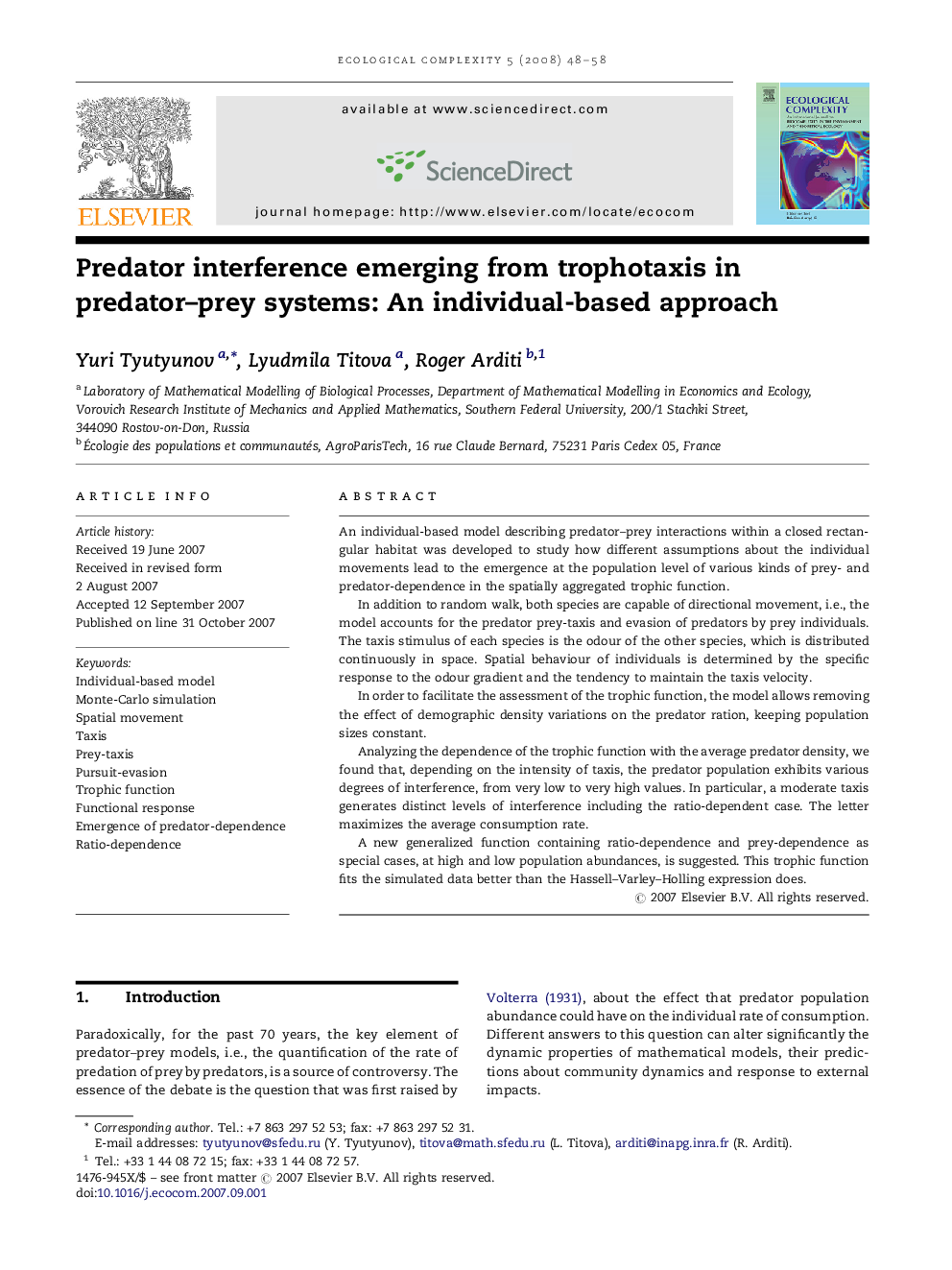| کد مقاله | کد نشریه | سال انتشار | مقاله انگلیسی | نسخه تمام متن |
|---|---|---|---|---|
| 4372790 | 1303081 | 2008 | 11 صفحه PDF | دانلود رایگان |

An individual-based model describing predator–prey interactions within a closed rectangular habitat was developed to study how different assumptions about the individual movements lead to the emergence at the population level of various kinds of prey- and predator-dependence in the spatially aggregated trophic function.In addition to random walk, both species are capable of directional movement, i.e., the model accounts for the predator prey-taxis and evasion of predators by prey individuals. The taxis stimulus of each species is the odour of the other species, which is distributed continuously in space. Spatial behaviour of individuals is determined by the specific response to the odour gradient and the tendency to maintain the taxis velocity.In order to facilitate the assessment of the trophic function, the model allows removing the effect of demographic density variations on the predator ration, keeping population sizes constant.Analyzing the dependence of the trophic function with the average predator density, we found that, depending on the intensity of taxis, the predator population exhibits various degrees of interference, from very low to very high values. In particular, a moderate taxis generates distinct levels of interference including the ratio-dependent case. The letter maximizes the average consumption rate.A new generalized function containing ratio-dependence and prey-dependence as special cases, at high and low population abundances, is suggested. This trophic function fits the simulated data better than the Hassell–Varley–Holling expression does.
Journal: Ecological Complexity - Volume 5, Issue 1, March 2008, Pages 48–58